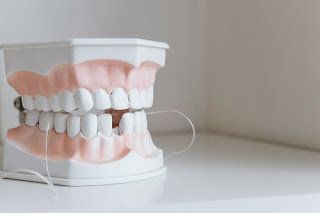Dental Crowns Treatment: Why Get It?
In dentistry, a crown is added over the surface of teeth when a tooth's surface breaks chips or fractures. Zirconia crowns are mainly positioned to prevent further damage. It has long been a solution to fix a broken tooth. These tooth-shaped caps assist improve your teeth and enhance your smile.
When is a Crown Needed?
Dental experts use dental crowns to restore:
Weak Teeth — Crowns fragile guard teeth caused by extreme dental decay
Cracked Teeth — Crowns hold together components of cracked teeth and repair their natural shape, function, and look
Tooth Discoloration — If your teeth are significantly discolored, tooth-colored crowns are also the right solution.
When your dentist recommends you want dental bridges, you might be wondering about two things: What type of dental bridge would be best for me? And what is the cost involved?
5 Types of Dental Crowns
Below are the types;
Porcelain-Fused-to-Metal Crowns
The most common dental restorative material for caps is porcelain. Porcelain teeth are set into metal jackets or bands, which hold them tight against the dentin underneath. If a patient has no teeth that are strong enough to hold a crown in place, metal brackets will be put on first and then attached to the metal jacket as usual. These brackets help keep the height in place until the composite of their bonding agent hardens and becomes permanent.
Metal Crowns & Gold Alloys
Metal crowns are available in many different colors and styles. Gold-colored metal crowns are famous, but other metals like silver occasionally might be used. Metallic varnish covers these materials for strength and durability, allowing the height to remain effective for a long time. Some Tooth Crown is no longer made of noble metals, however. Sometimes, lower-cost alternatives such as nickel- or tin-based alloys may be used instead.
Stainless Steel Crowns (SSCs)
Stainless steel crowns are sealing dental devices made of metal used to restore teeth that have been damaged. SSCs and pieces like them are used in two different types of cases: either to fix teeth that were physically damaged through a process called a pulpotomy repair or if your dentist finds that amalgam fillings (the ones typically used to fill holes in your teeth) have the risk of not having enough staying power or potentially wear out quicker than they are designed to.
Cosmetic Crowns (Ceramic)
Dental ceramic crowns are porcelain crowns. Porcelain material can be used to create dental materials that replicate the shape, appearance, and function of your natural teeth, such as fiberglass or plastic tooth implants.
All-Resin Crowns
Resin is used in dentistry mainly in a 'composite': a mixture of resin and different fillers. Composite is typically used as a dental restoration material, especially as a filling material for decayed child teeth. However, by nature, wax is very fragile, which makes it less suitable for use on permanent adult teeth.
The Dental Crown Procedure
Dental crowns procedure involves typically two visits to the dentist:
The First Visit
On your first visit, be ready to undergo X-rays for two main reasons: whether a root canal is suitable for the tooth or not (by gauging if there's an infection risk), and seeing the condition of your tooth's roots to see how serious a case you're dealing with.
Your dentist will numb the tooth, gums, and surrounding areas. Next, your teeth are filled to make room for the crown. If you suffer from a significant loss of tooth area due to decay or injury, the dentist may replace your damaged dental material with one that can hold up better so that your crown can stay safe. The tooth and gums should heal together by forming a solid bond between them to prevent future movement or displacement of the new root structure that is being created.
Once the teeth are given a makeover, our dentist will use putty to either above or below the teeth, which won't affect chewing for more than two weeks. Once two weeks have passed, and the permanent crown is ready for implantation, you'll have that bonded onto your natural tooth to protect while still allowing it to feel like your own teeth in terms of biting or tearing away at any food that comes in-between.
The Second Visit
The second trip to the dentist usually begins with applying a temporary crown. Once it has been placed, the dentist will make a comparison. They need to make sure it matches the specifications of the impression and makes sure it satisfactorily fits on the tooth.
For more information, reach out to Gental Dentle!
Source URL: https://www.gentledental.co.nz/

.jpg)
Comments
Post a Comment